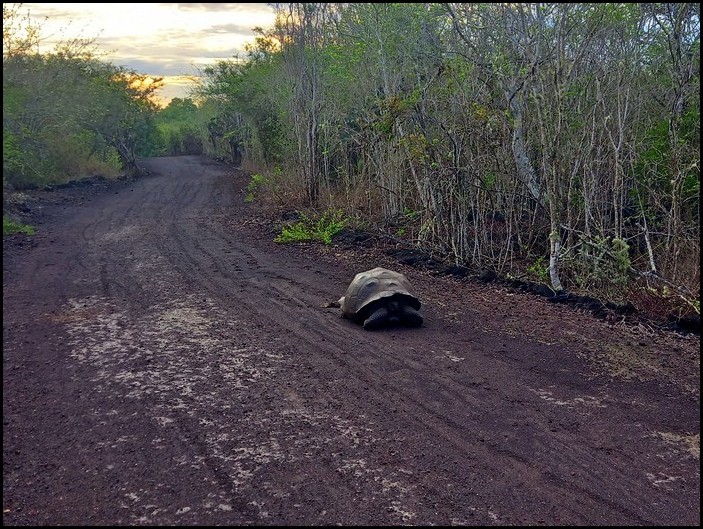
12 Surprising Facts about The Galapagos
I love researching in advance about the places I’m about to explore, so I always learn a lot about my destinations before I arrive. During my preparations, I always end up learning many surprising, intriguing and unusual things about each place.
The same holds true for the Galapagos.
In addition to my pre-travel research on the Galapagos, after I arrived at the islands I very luckily stumbled onto two excellent & extensive guidebooks to the islands. Both were written by European scientists/biologists who spent well over 20 years of their lives in the Galapagos.
Here are 12 of the most surprising and unusual things I’ve learned about these fascinating, unique islands…
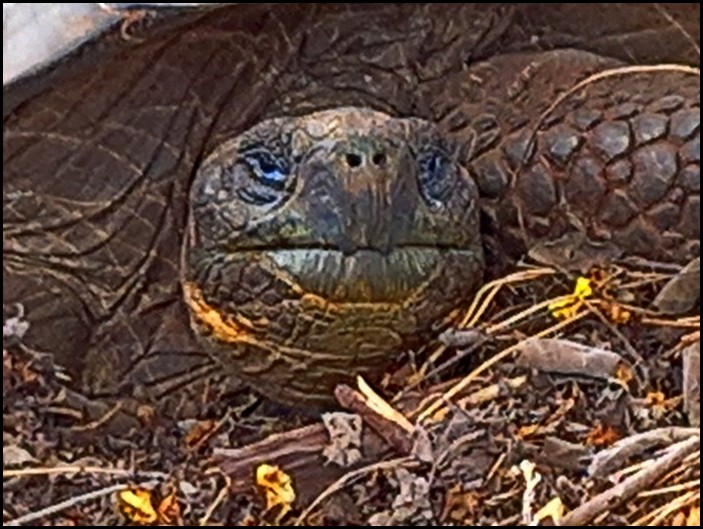
1. ‘Galapagos’ means ‘Tortoise’
It’s perfectly fitting that these remote Pacific islands are named after their most famous endemic residents, the Giant Tortoises.
‘Galapagos’ is an old Spanish word for saddle. The islands’ turtles became known by this name because some species of Galapagos turtles have shells shaped very much like tradtional Spanish riding saddles.
However, the official name of this island archipelago, at least since the islands were claimed by Ecuador in the 1800s, is El Archipelago de Colon, in honor of Christopher Columbus.
Despite its official name, ‘Galapagos’ is the common name used by people all over the world.
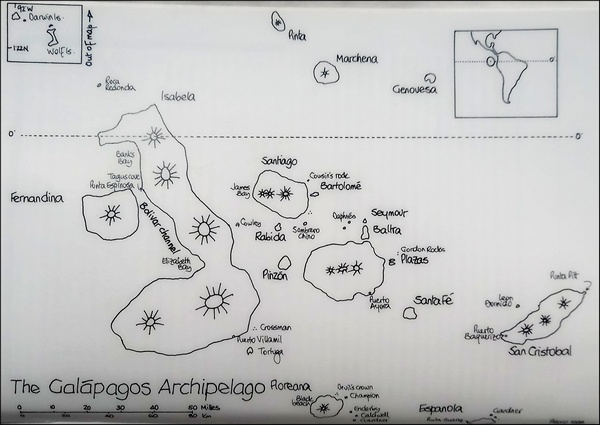
2. Galapagos Islands are situated directly on the Equator
The islands of this large archipelago are spread out over 320 miles/174 km east to west, strattling the Equator. More specifically, the equatorial line passes directly over Wolf Volcano on the northern end of Isabela Island. Isabela is the largest and one of the most centrally-located islands.
Most of Galapagos’ major islands are located close to Isabela, slightly to the east, west or south, in a fairly close cluster. Several more remote islands are located farther north.
3. The Galapagos archipelago is located 1100 km / 600 miles from the coast of Ecuador
The easternmost Galapagos island, Santa Cruz, lies 600 miles from the coast of Ecuador.
That’s a 2-hour flight from the coastal city of Guayaquil or a 3-day trip by cargo ship.
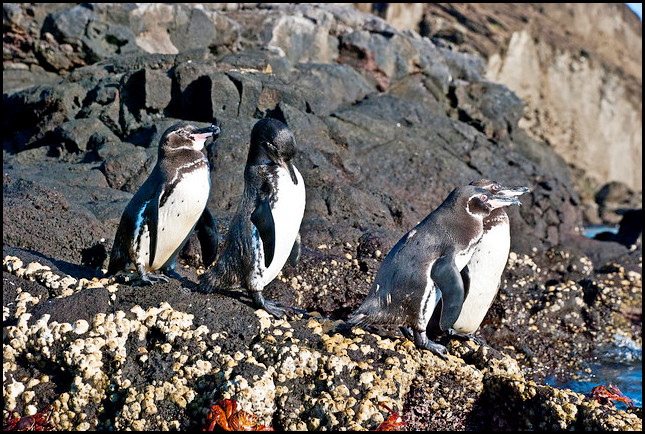
4. Galapagos Penguin is the only penguin that lives at the Equator
Penguins are well-known as cold climate sea birds. In fact, all penguins except the tiny Galapagos Penguins live in the far southern hemisphere at or near Antarctica.
Considering that, it’s quite remarkable that any penguin lives at the Equator, often some of the hottest places on Earth.
The penguins” tolerance of the Equatorial location is due to the cold Humboldt Current, which surges north from the Antarctic region, up along the coasts of Chile and Peru, then turns westward at the Equator, arriving directly at the Galapagos.
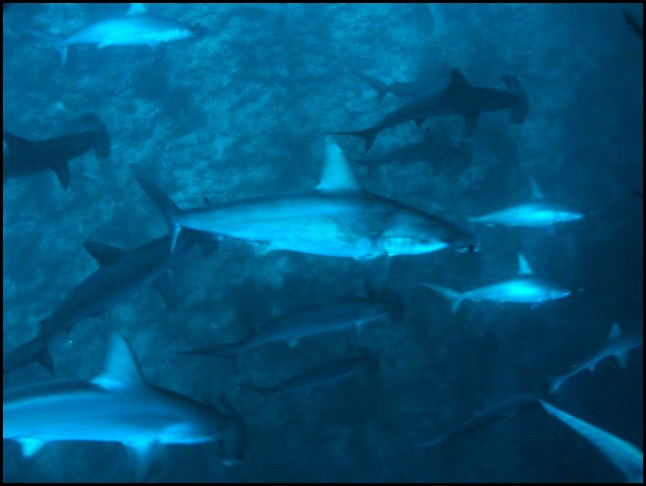
5. Galapagos has the highest concentration of sharks in the world
A total of 31 species of sharks inhabit the vast Pacific waters surrounding the Galapagos archipelago. Perhaps the most famous are hammerhead sharks, particularly famous to scuba divers. Galapagos is one of the few places on the planet to dive among hammerheads.
Not only are there a large diversity of shark species, but shark numbers are also very high. For instance, it’s possible to dive with huge schools of hammerhead sharks, not just one or two stray sharks.
On Santa Cruz island, at the main town of Puerto Ayora and nearby, it’s a daily occurrence to spot sharks swimming just below the boat piers, at shallow mangrove areas and at the beaches.
Quite unfortunately, this high concentration of sharks has attracted shark fishermen who illegally hunt sharks in Galapagos waters, mainly for their fins. Galapagos patrols sometimes catch these international poachers.
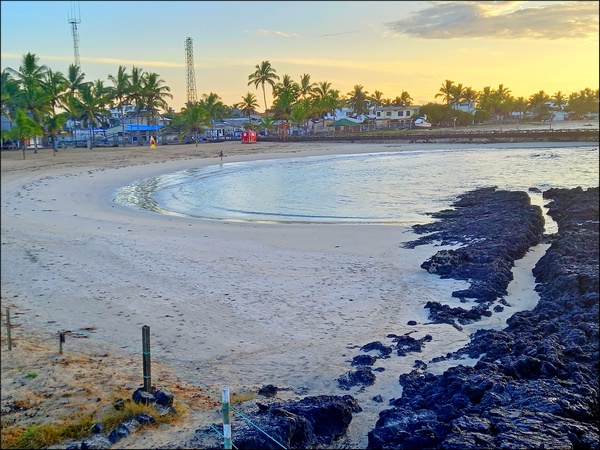
6. The Galapagos Islands are inhabited!
There are currently four inhabited islands in the Galapagos: Santa Cruz, San Cristobal, Isabela and Floreana. The biggest town and hub of tourism is Puerto Ayora on Santa Cruz Island. Considerably smaller towns (villages) are situated on the other three islands.
Each settlement takes up just a small portion of its island, with the rest of the islands wild and completely undeveloped.
The remaining 15 islands and 42 islets of the archipelago are uninhabited, except for wildlife. In total, 97% of the Galapagos islands are uninhabited. Only 3% has human habitat.
Prior to the current human population, Galapagos has had a long, long history of intermittent human habitation and interference. The oldest-known visitors were pre-Incan indian tribes from Ecuador. Samples of their pottery have been found on the three easternmost islands.
In the late 1400s an Incan prince visited the Galapagos. In the mid 1500s various Spanish ships visited the islands, either accidentally or intentionally.
In the 1600s various pirates made Floreana Island a home base and treasure hide away. In the late 1700s-early 1800s, the Galapagos Islanads were frequented by whalers.
In 1832 the islands were officially claimed by Ecuador. Thirty years later a penal colony was established on Floreana for some decades. In the early 1900s a few eccentric Germans attempted to colonize Floreana.
Finally, in the mid 1900s Ecuadorians from the mainland began slowly settling on Santa Cruz, San Cristobal and Isabela. They established fruit, vegetable and animal farms, managing to live off the land.
It is primarly their descendants who have been living at Galapagos, up until the advent of tourism in the late 1990s-early 2000s. Since then, more people have moved to the islands. Towns have began growing larger (particularly Puerto Ayora) with hotels, restaurants, shops and tour operators getting established.
Charles Darwin Research Center and a few other scientific/research/conservation organizations were established on Santa Cruz in ….

7. It’s possible to visit Galapagos as a budget traveler!
Since the explosion of ‘mass tourism’ to the Galapagos in the late 1990s, more and more hotels, hostels and home-stays have sprouted up. As a result, there are now a handful of low-budget accommodation options. They include hostels and ‘hospedajes’, rental rooms at family homes.
In addition, after visitors pay their $100 National Park fee and arrive at the islands, there are many things to see and do independently, without paying any additional fees or joining any guided tours.
Finally, there are many places to eat relatively cheaply in the main towns. Fruits, vegetables, snacks and most other groceries can be bought at the small shops and larger supermarkets. Bakeries sell delicious breads and sweets.
As a result, budget travelers can find reasonable lodging, food and plenty to see and do at a relatively low cost.
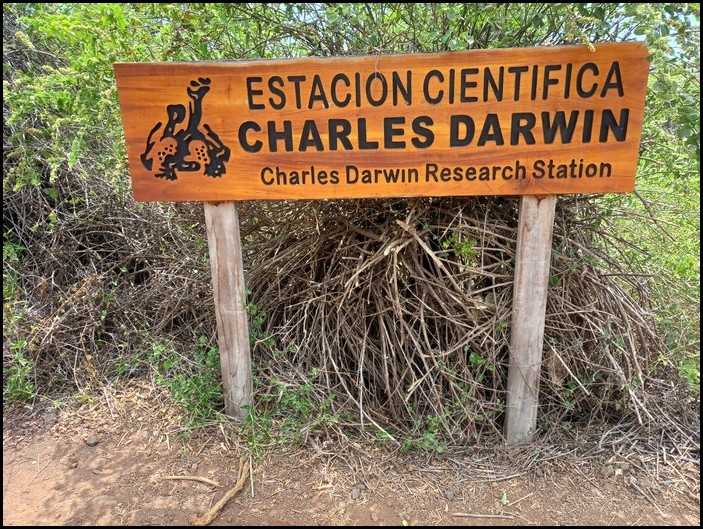
8. Charles Darwin Research Center is located at Galapagos
Charles Darwin developed his famous, transformational work on The Theory of Evolution, in great part based on his exploration of the Galapagos Islands in the mid 1800s. In fact, besides Giant Tortoises, this is one of the archipelago’s main points of fame.
In his honor, the CHArles Darwin Research Station was established in Puerto Ayora on Santa Cruz Island in the early 1960s with funding from UNESCO and Ecuador. It’s four main objectives are scientific research, to obtain funding for conservation efforts, to assist Galapagos National Park with educational programs, and to educate Ecuadorian youth.
Important donors include Smithsonian Instititue, WWF, Ecuador government, San Diego Zoo and the Franfurt Zoological Society. Many private donors contribute as well.
Over the decades, the rsearch station has been directed by various renowned American, European and Ecuadorian scientists. Various scientists can visit with research projects and many volunteers help carry on the many research and conservation efforts at the islands.
All visitors to the Galapagos can visit Charles Darwin center, their musem and various exhibits about Galapagos plants and animals, marine life and conservation projects.

9. 40% of Galapagos flora and fauna are endemic
For remote islands that were formed by volcanic action from the sea floor and never connected to any continent, any endemic plants and animals necessarily arrived over the vast ocean by some means. Either by air or sea water.
Birds and insects could have flown or drifted by strong winds, as could certain seeds. Marine animals could have swam and/or been carried by currents. Land animals could have drifted by various natural vegetation rafts. Insects and plants could have been attached to birds, animals or rafts. By one means or other, they arrived to the remote Galapagos Islands long, long ago and then developed into distinct species not found anywhere else on the planet.
In Galapagos archipelago, a whopping 40% of all plants and animals are endemic. Some have been determined to be related to similar species in North, Central, South America or the CAribbean. Some, like the famous Giant Tortoises, still present a mystery as to how they arrived.
Indigenous species include Giant Tortoises, Marine Iguanas, Galapagos Penguins, various Finches and water birds, several species of Scalesia plants & trees, and many other unique trees and plants.
This means that all visitors to the Galapagos are going to see dozens of unique animals, birds and plants that they’ll never see anywhere else in the world. Visiting Galapagos is a once in a life time experience.
The other 60% of plants and animals found in the Galapagos were introduced, either intentionally or accidentally by humans in relatively recent history. To some extent, either minor or seriously, these introduced species have altered the original endemic populations. Scientists and NGOs are working to limit or eliminate these invasive species and restore the islands to their pre-human state.
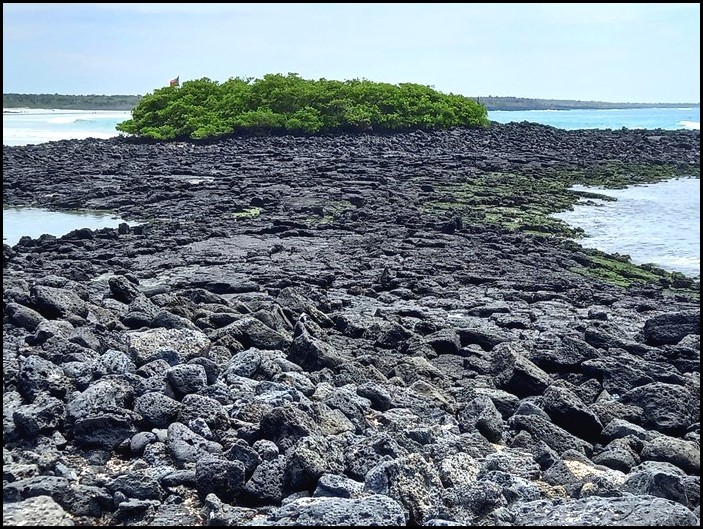
10. Galapagos Islands are volcanic in origin
The Galapagos Islands were formed over several million years by volcanic activity emanating from the bottom of the deep Pacific Ocean.
Molten lava from the Earth’s core exploded upward through weak spots in the ocean floor. As soon as the lava hits the cold sea water, it instantly dries and hardens, creating a hill on the ocean floor.
Over millenia, with repeated lava explosions up through the same weak spots, the hardened lava hill grows larger and larger, higher and higher, until it eventually breaks the surface of the ocean. At this point, an island begins forming.
The Galapagos Islands were each formed in this manner, one by one, from east to west. Thus, the easternmost islands, including Santa Crystobal, are the oldest. The westernmost islands, including Isabela and Fernandina, are the youngest and still have active volcanoes today.
Because of the islands’ volcanic creation, many interesting and unusual volcanic features can be seen throughout the Galapagos Islands. Volcanic cones and peaks, craters, crater lakes are some of the most common volcanic features. Some islands are little more than the partial tops of crater rims, with the remainder submerged.
Various types of hardened lava flows, black volcanic rocks and volcanic gravel are scattered all over the islands, both inland and at the coasts on beaches, mangrove forests and at towns.
One more unusual volcanic feature, found throughout the islands, are lava tunnels. Visitors can walk through a few lava tunnels on Santa Cruz Island.
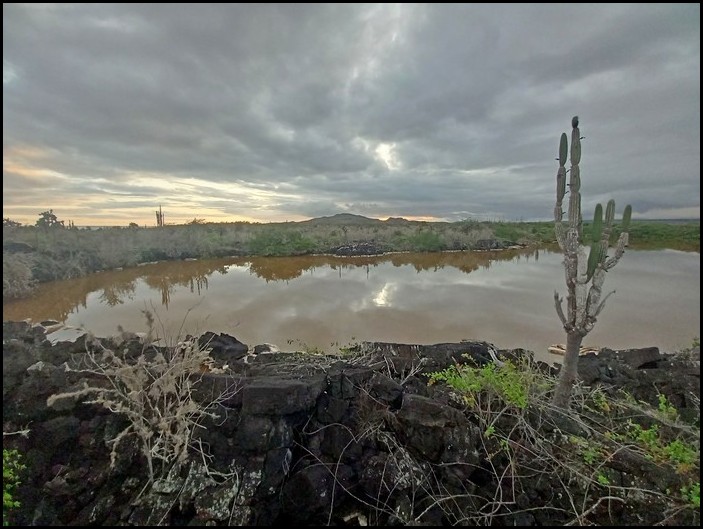
11. There’s a surprising diversity of vegetation / climate zones in Galapagos
Scientists have identified 7 distinct vegetation zones on the Galapagos Islands. They range from the salty coastal zone to the dry arid zone, to wetter tropical zones to high pompas grass/bog/peat zone.
Personally, while I’ve been exploring Santa Cruz and Isabela islands for one month, I’ve identified even more quite distinctive zones (though, of course, these are not technical-scientific zones) within the scientists’ ‘Coastal Zone’. In each area, there are quite different flora and fauna. I identify them like this:
Above/on the sea, subaquatic marine zone, beach, sand dunes, mangroves, and arid-cactus zone. I’m not sure why scientists haven’t divided the coastal zone into more distinct regions… perhaps they are but I just haven’t read in enough depth.
In any event, there’s a very surprising diversity of landscapes, topographies, indigenous trees, bushes, flowers, birds and animal life in the Galapagos.
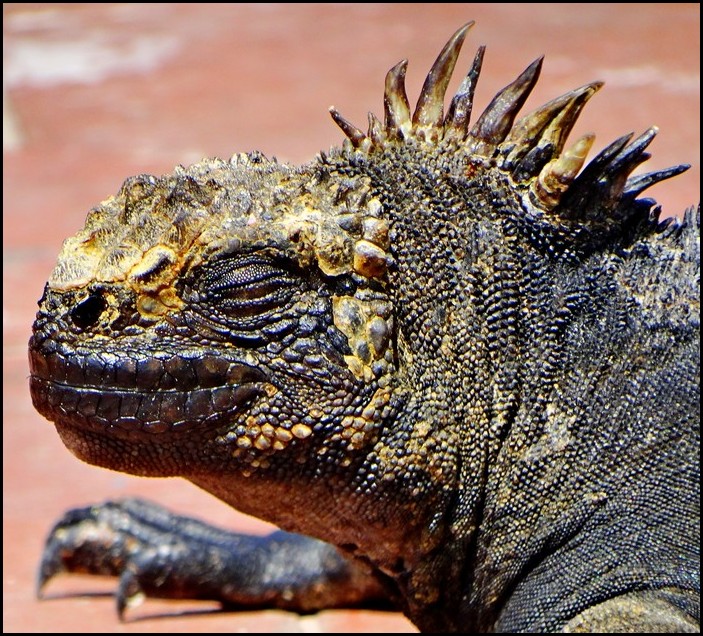
12. The world’s only marine iguana lives exclusively in Galapagos
Iguanas are primarily land animals and are found in many regions of the world. Galapagos also has two species of land iguanas, which are related to iguanas of South America.
But the most abundant and commonly seen iguanas in Galapagos are marine iguanas. They also evolved from land iguanas then adapted to the sea for food. They are the only marine iguana species in the world.
Visitors can see them at practically every coastal area: basking in the sun on beaches and volcanic rocks; swimming in the sea, particularly near mangroves; and lounging at boat piers, town sidewalks, roofs and anywhere they can catch some sun rays. They swim in a side-to-side wavy motion, much like snakes.
These Galapagos Marine Iguanas are relatively small iguanas, measuring about 6 inches to 3 feet long. Their tails constitute half their body length. They are dark brown to black, with some rough white skin on their headss. A series of thorn-like spikes run from the top of their heads down their backs to the tail tip.
============================================
You might also enjoy:
10 Surprising Facts about Ecuador
=============================================








 Hi! I'm Lash, an American nomadic world traveler who's been traveling solo since 1998. I’m passionate about traveling the world nomadically and then sharing it all with you. I hope to inspire you to travel the world, to entertain you with tales from the road, and to help you reach your travel dreams. Welcome!
Hi! I'm Lash, an American nomadic world traveler who's been traveling solo since 1998. I’m passionate about traveling the world nomadically and then sharing it all with you. I hope to inspire you to travel the world, to entertain you with tales from the road, and to help you reach your travel dreams. Welcome! 




3 pings
11 Interesting Facts about Lima – Peru - LashWorldTour
2022/07/01 at 8:10 am (UTC 8) Link to this comment
[…] 12 Surprising Facts about Galapagos Islands – Ecuador […]
12 Interesting Facts about Chile - LashWorldTour
2022/10/28 at 7:31 am (UTC 8) Link to this comment
[…] might also enjoy:13 Things I Love about South America12 Surprising Facts about the Galapagos Islands12 Interesting Facts about […]
LashWorldTour 2023 Travels in Review - LashWorldTour
2024/01/14 at 12:00 am (UTC 8) Link to this comment
[…] I had started the journey in February, 2022, by flying into Ecuador then promptly heading out to the famed Galapagos Islands for a one-month stay. I wrote more about the wonderful Galapagos here. […]